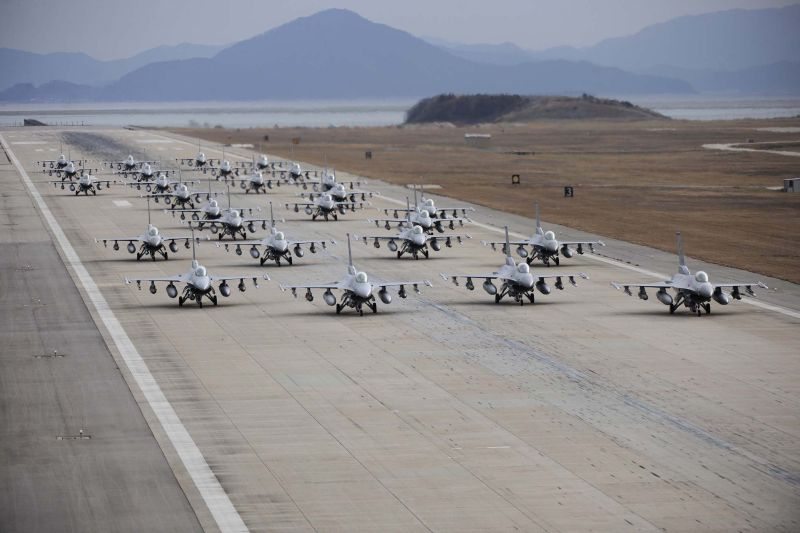The Air Force plans to upgrade and extend the service life of 300 F-16 aircraft and the Navy 150 F/A-18 aircraft, at a combined cost estimated at almost $5 billion in fiscal year 2013 dollars.
- The Air Force plans to extend the service life of selected F-16s by 2,000 flying hours each as well as install capability upgrades such as an improved radar. The Air Force estimates that it will complete this work by 2022 at a cost of $2.61 billion. About 28 percent of the projected costs are included in the Air Force’s spending plans through 2017, with the remainder expected to be incurred in 2018-2022.
- The Navy plans to extend the service life of selected F/A-18s by 1,400 flying hours each and may install capability upgrades on some of the 150 aircraft—such as adding the ability to integrate with newer aircraft. The Navy projects that it will complete the life extension by 2018 at a cost of $2.19 billion, with most of these costs included in its spending plans through 2017, but costs associated with any upgrades are not included in the Navy estimate or in its spending plans.
Air Force and Navy officials told GAO that they could ultimately extend the service life of up to 650 F-16s and 280 F/A-18s if needed to attain desired inventory levels.
The Air Force’s and Navy’s cost estimates to upgrade and extend the service life of selected fighter aircraft exhibit some characteristics of a high-quality cost estimate but do not reflect all potential costs.
The estimates were: well-documented since they identified data sources and methodologies; accurate since they accounted for inflation and were checked for errors; and mostly comprehensive since they included the work planned and identified key assumptions.
However, the estimates were not fully credible in part because they did not assess the extent to which the total costs could change if additional work is done or more aircraft are included in the programs.
For example, Air Force leaders indicated in March 2012 that they intend to upgrade and extend the service life of 50 additional F-16s beyond the original 300, but the Air Force has not assessed how much the cost might increase if more aircraft are added to the program.
In addition, the Navy plans to upgrade the capabilities of some aircraft at the same time as the service-life extension, but this cost is not included in the Navy estimates. Also, the Navy may extend the life of or replace other aircraft components that are becoming obsolete, but these costs—which could add an average cost of $5.64 million per aircraft—were also not included in the original $2.19 billion estimate.
Another factor affecting the credibility of the estimates is that they have not been compared to an independently developed estimate. GAO’s past work has shown that such an independent cost estimate is one of the best validation methods since an independent cost estimate tends to be higher and more accurate than a program office estimate. Air Force and Navy officials told GAO that they use Department of Defense and military department guidance that allows for some variation in how the estimates are developed depending on the dollar value and maturity of the program.
However, these programs–which are critical to maintain fighter capability and capacity as current inventory ages–total almost $5 billion and the costs will increase if program quantities and scope increase. Without fully credible cost estimates, including an analysis of how much total costs may increase, decision makers will not have visibility into the range of potential costs, which could hinder their ability to formulate realistic budgets and make informed investment decisions.
[Download not found]










